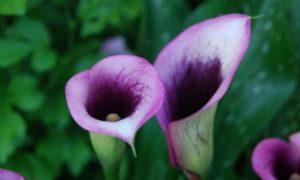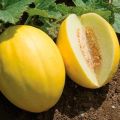Rules for the care of gladioli after flowering and timing of events, storage of bulbs
Gladiolus, or skewer, is a representative of the genus of perennial flowering herbaceous plants from the Iris family. Their feature is the presence of a corm. In ancient times, they were eaten. They were especially popular with warriors, who attributed magical powers to them. Modern flower lovers should remember that proper care of gladioli after flowering is the key to getting healthy plantings next season.
Pre-harvest activities
About 5000 varieties of gladioli are now known. To extend the life of varietal flowers, you need to properly take care of their corms.
Peduncle cut
Pruning flower stalks in gladioli depends on the purpose of their cultivation. If the plant is intended for bouquet cutting, then the peduncle is cut off after the lower flower opens or the three lower buds are colored. In this case, you need to take care of the safety of the leaves, otherwise the bulbs and children will suffer. It is optimal to pierce the peduncle with a knife and break it.
In the event that a skewer is planted to decorate a flower bed or flower stalks remain after a bouquet cut, then they are removed after all the buds have opened and faded. Do not leave withered and dried flowers on the plant. This will loosen the bulbs. After the end of flowering, the peduncles are cut with a clean knife at a distance of 5-6 cm from the ground.
Plant pruning
Once the flowers have been cut, you can start pruning the entire plant. This will require not only a sharp but also a clean instrument.
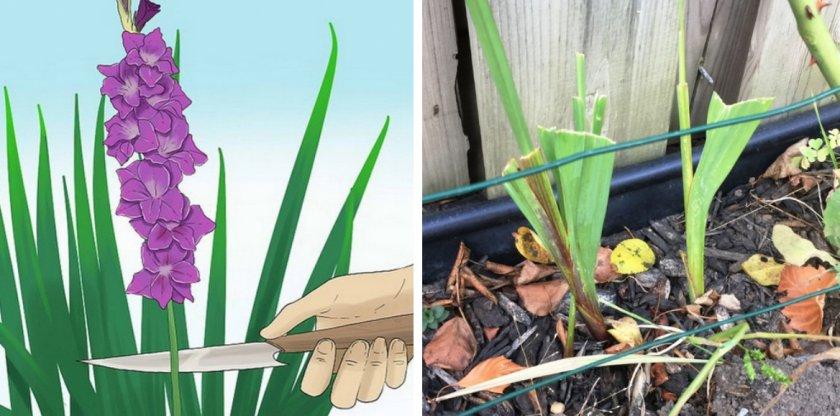
For pruning, use a pruner or a sharpened knife. The height of the leaves after pruning should not exceed 25-30 cm.
Reducing watering
If during growth and flowering the plant needs to be watered at least once every 10 days, then at the end of summer watering can be reduced to once every two weeks. No additional moisture is needed in rainy weather. Watering is completely stopped after flowering.
Late varieties are watered for the last time no later than September 10-15. At the same time, the soil is loosened near the plant.
Top dressing
In order for the bulbs to successfully endure the winter, they need to be fed after cutting all the peduncles. For these purposes, you can dilute a tablespoon of superphosphate in 10 liters of water. Pour one glass of wood ash there. This amount is enough for 1 square meter of planting. After two weeks, add 1-2 g of potassium permanganate to the indicated ingredients. With the resulting mixture, carry out one more dressing of flowers.
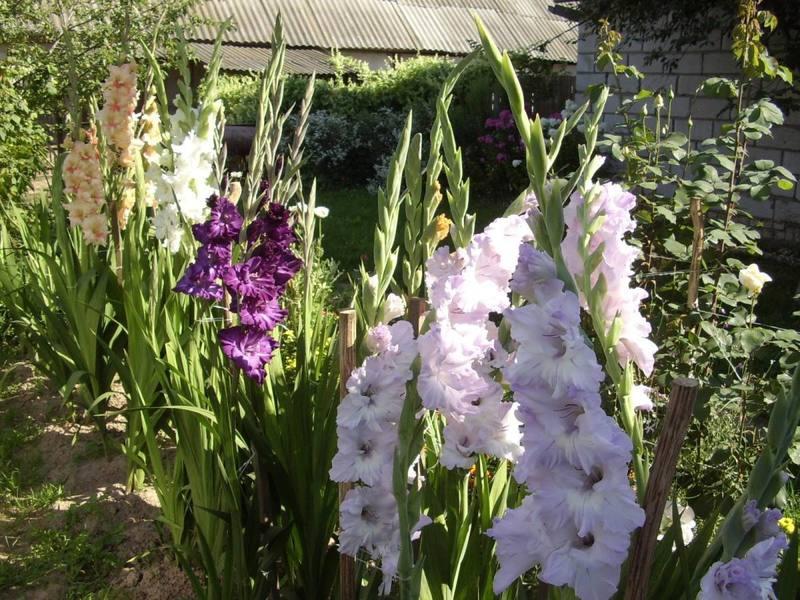
Flower processing
In unfavorable weather, before digging the bulbs, the flowers are treated with insecticidal preparations. Small sucking insects from the order of Thrips are especially dangerous for gladiolus. They suck the juices out of the stored corms, leading to their complete drying. To avoid this, after the last feeding, the flowers can be treated with any insecticidal agent against thrips.
Dates for digging corms
The time for digging the bulbs for early and middle varieties comes in about 30-40 days, and for late ones - 40-50 days after cutting the greens. In the middle lane, this can be done from mid-September to mid-October. If the grower is late with pruning, then you need to stand for at least three weeks after it.
Many growers focus on harvesting potatoes and late cabbage. They dig the corms after harvesting the first crop, but before harvesting the second crop. It is important not to wait until the average daily temperature drops below -1 ... -2 degrees.
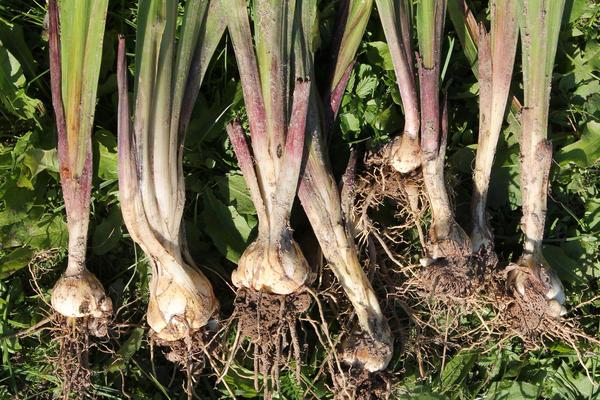
Digging nuances
It is advisable to start removing the bulbs from the soil in dry weather. The following stages and nuances of this process can be distinguished:
- Stock up on a pitchfork or bayonet shovel.
- You need to plunge the tool into the ground at a certain distance from the intended location of the bulb. The forks can be held straight and the shovel tilted.
- Dig in the plant from 3-4 sides.
- Gently press down on the handle of the tool, with the other hand, remove the bulb from the ground by the remnants of ground parts.
- Shake off excess soil with light movements.
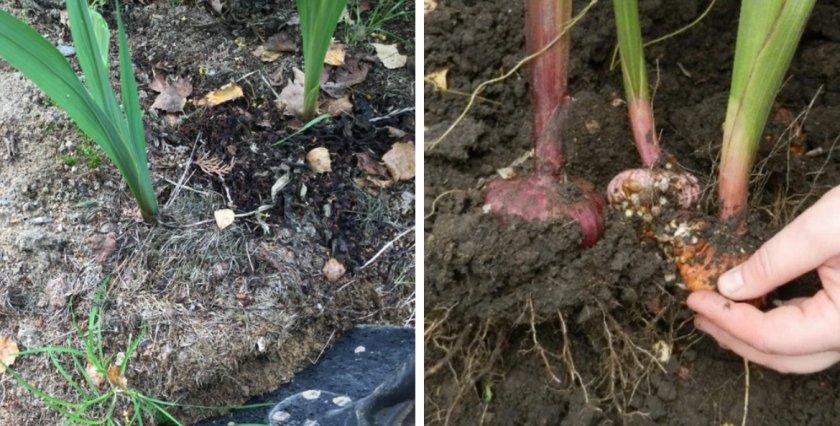
Cleaning and storage of gladioli
When cleaning, it is important not to rush and be careful not only not to damage the mother's bulb, but also not to lose the children. After collecting you need:
- cut off ground parts and roots almost completely;
- sort out, remove damaged, rotten specimens;
- separate the kids;
- wash with running water;
- treat with diluted karbofos or another drug according to the instructions;
- soak for 10 minutes in a pink solution of potassium permanganate;
- put in boxes in one layer;
- put everything in a dry room with a temperature of +25 degrees for three weeks;
- then remove the excess scales;
- sort by size.
After these events, you can lay gladioli for storage. The selected corms must be transferred to clean cardboard or wooden boxes. Move them to a dry basement or cellar. Store at + 2 ... + 5 degrees. Inspect planting material several times over the winter and remove spoiled specimens.
